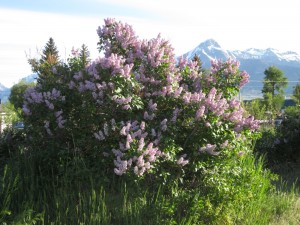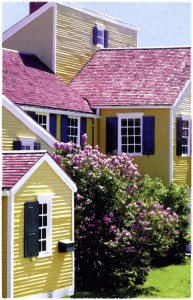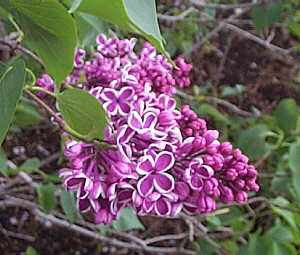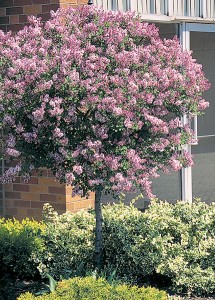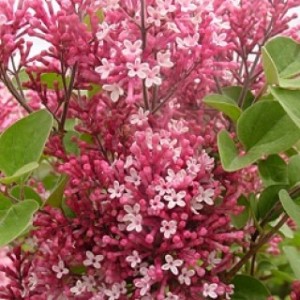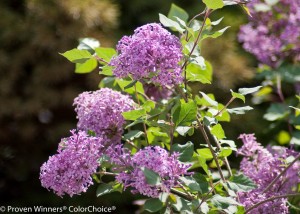Lilacs- Then and Now
Lilacs- Then and Now
Lilacs are, if nothing else, survivors. Much like our pioneer heritage, lilacs are a hardy lot. Visit almost any ghost town, pioneer cemetery, or century old home throughout the west and you are likely to see lilacs growing- some having survived without any water or care for decades. The pioneers mostly brought the common purple lilac with them, but you do find the occasional white or deep purple.
And lilacs aren’t just a part of the history of the west, they are a part of the history of the founding of our country. You’ll find references to the planting of lilacs in the writings of both George Washington and Thomas Jefferson. Reportedly, the oldest living lilacs in North America are those at the Governor Wentworth estate in Portsmouth, N.H., believed to have been planted around 1750. If true, those lilacs are now well over 250 years old!
But lilacs are much more than just survivors. Their beauty is legendary, their fragrance is the perfume of spring. Indeed lilacs are one of the most popular and beloved flowers in America. But lilacs are not native to the U.S. The common lilac (Syringa vulgaris) originated in eastern Europe. The French hybridized these lilacs into what we refer to today as French hybrids” even though many of them are no longer bred in France.
French hybrids have large shiny deep green leaves and typically grow 8 to 12 feet tall. They are known to have many suckers at the base. The best way to keep a lilac leafy and full to the ground, and keep it blooming profusely, is to periodically prune out the oldest canes and allow new canes to replace them. Alternatively you can keep all suckers removed, in which case the lilac will become more tree-like.
“Sensation”One of the most uniquely beautiful of the French hybrids is a purple and white bi-color called “Sensation”. An outstanding lilac noted for its large trusses of purplish-red florets edged in white.
“Primrose”
Lilacs are most commonly some shade of purple. One of the more unusual colors is “Primrose” a light yellow. Originally introduced to the world in 1949, “Primrose” bears numerous graceful clusters of yellow buds opening to a light pastel yellow flowers in late May. It won a Royal Horticulture Society Award of Merit in 1950, but has been difficult to find outside of Europe until recent years. It is now more readily available in the United States for those looking for something different.
“Dwarf Korean”
Other lilacs come from Asia, including one of the most popular smaller growing lilacs, Dwarf Korean (Syringa meyeri ‘Palibin’). Noted for it’s dwarf size (about 4-5′), it’s wonderful fragrance, and for blooming slightly later than the French Hybrids. The Dwarf Korean lilac is also often grafted on to a “standard” making it into a very dwarf tree, as shown at right.
“Tinkerbelle”
An exciting new entry to the crowded lilac field is “Tinkerbelle” (Syringa ‘Bailbelle’ PP#12,294). This dainty beauty has a growth habit and bloom time similar to Dwarf Korean, maturing at only 4-6′. The arching branches are loaded with masses of dark wine red buds, which open to sweetly fragrant, dainty pink flowers in early to mid June. It has a rounded, upright, non-suckering habit and is perhaps best noted for its compact shape and wonderfully fragrant blossoms.
The result of crosses made between Syringa meyeri ‘Palibin’ and Syringa microphylla ‘Superba’ by Neal Holland of Sheyenne Gardens in North Dakota, “Tinkerbelle” was patented and introduced by Bailey Nurseries of St. Paul Minnesota in 2001. Hardy to zone 3 (-40 degrees) it is plenty hardy for planting almost anywhere in east Idaho.
“Bloomerang”
The latest lilac to take the world by storm is “Bloomerang”. Aptly named, this exciting new lilac begins the season with a spectacular show of blooms around the first of June. But that is not the end of the show. Beginning in mid-summer and continuing to frost, you will be surprised with continuing flushes of repeated blooms. Its small habit (4-5′ tall and wide) fits into most any garden.
Lilac Care
Lilacs prefer full sun for best bloom quality and disease resistance, but I have personal experience with “Tinkerbelle” lilac doing quite well in my yard in light shade.
Water as you would most shrubs. Lilacs are quite drought tolerant once established for a few years.
Most all lilacs are hardy to Zone 3 (-40 f), so cold hardiness is not an issue. But they do need the cold winter to set flower buds, so they don’t work in the warmer zones of the southern U.S.
Lilacs are tolerant of our alkaline soils and seldom exhibit symptoms of yellowing due to iron chlorosis. No special fertilizers are needed. Using T&C Tree & Shrub Food when lilacs are young will encourage faster growth.
Dwarf lilacs need little if any pruning, French Hybrids get larger and are sometimes pruned as a hedge. Lilacs are best pruned (if needed) immediately after flowering, this will eliminate unattractive seed heads and allow them time to form new flower buds for next year. Pruning in spring before flowering will reduce or eliminate blossoms.
The most common pests of lilacs are powdery mildew and black vine weevil. Neither are life threatening usually. Stop by Town & Country Gardens for recommendations for any pest issues.



